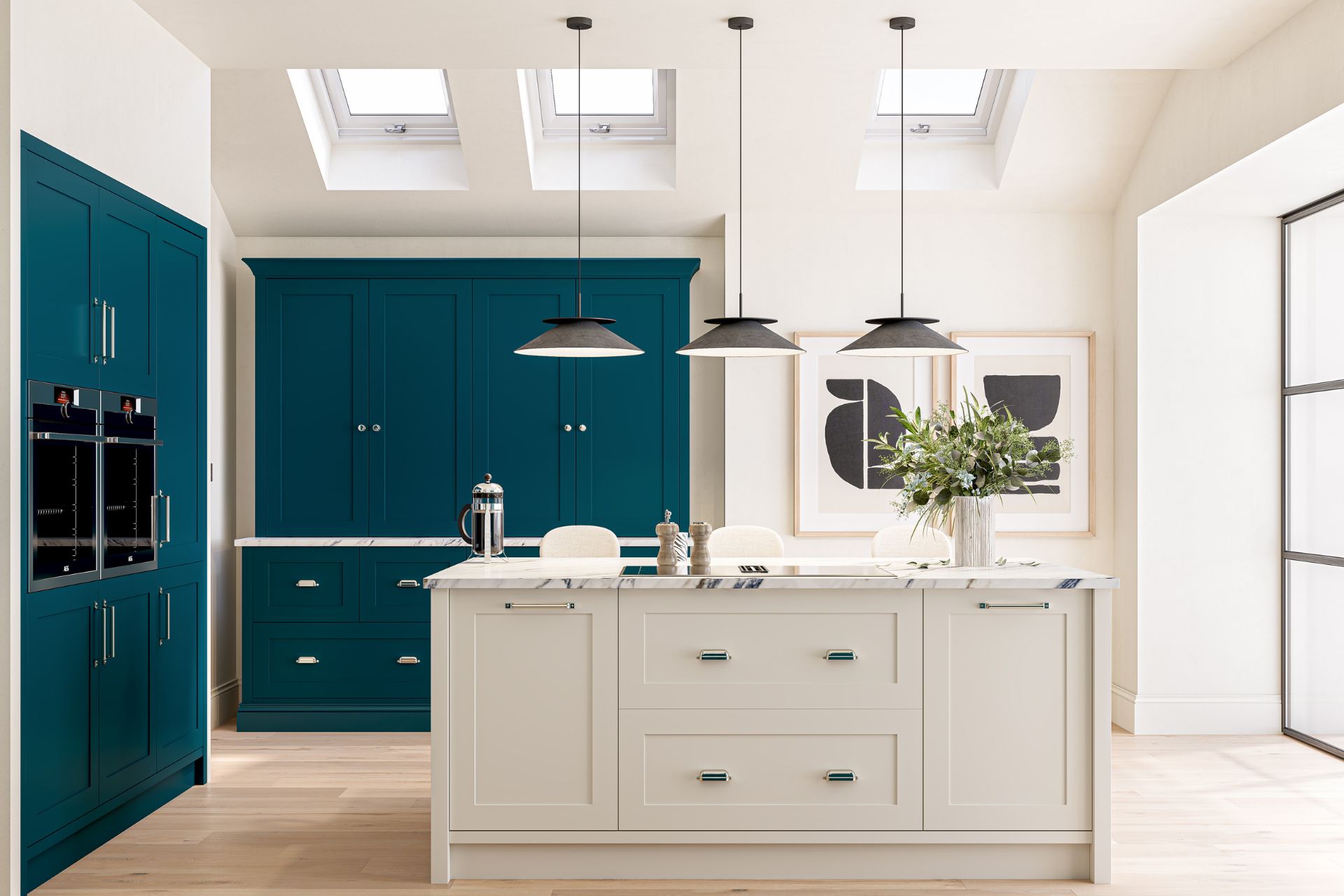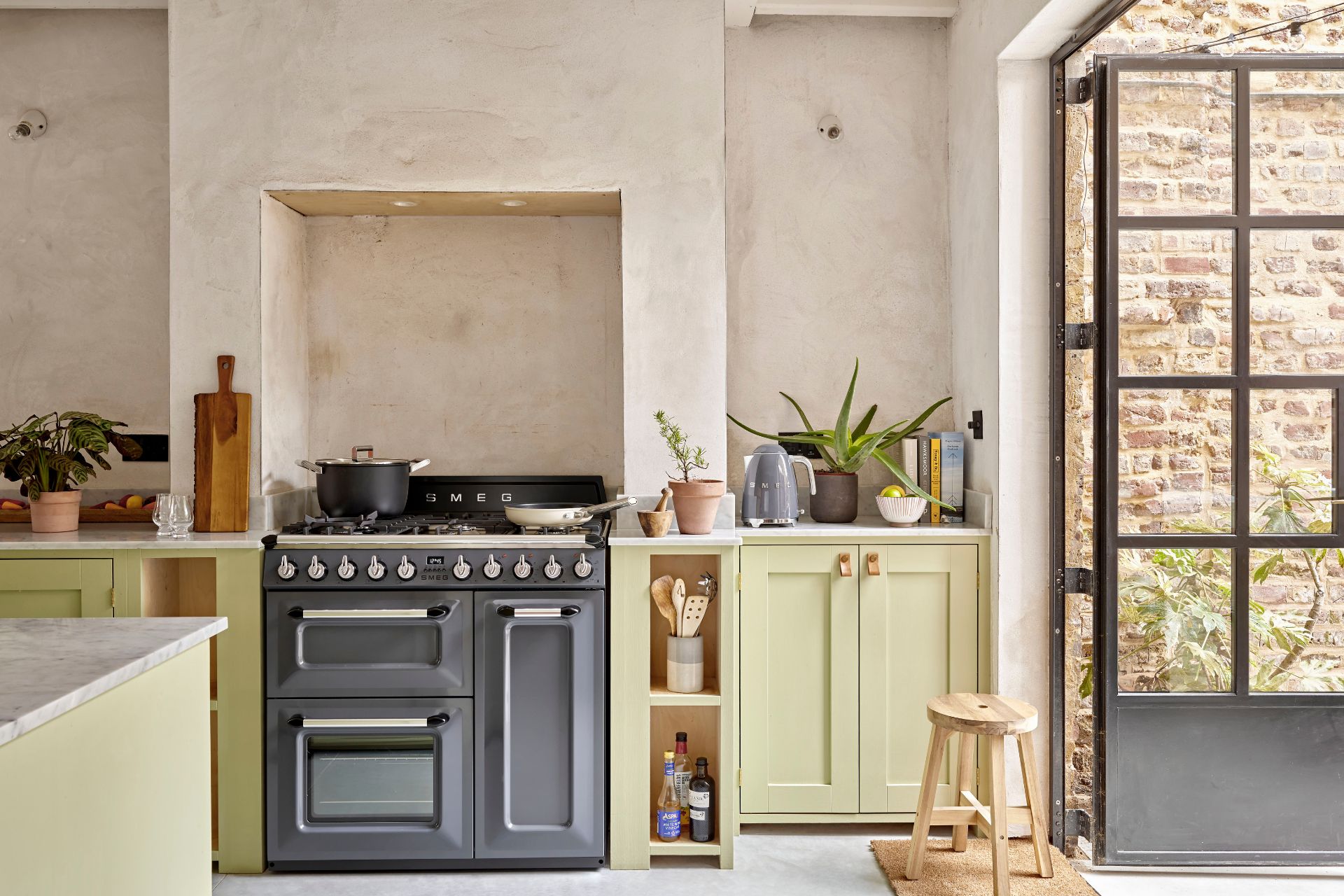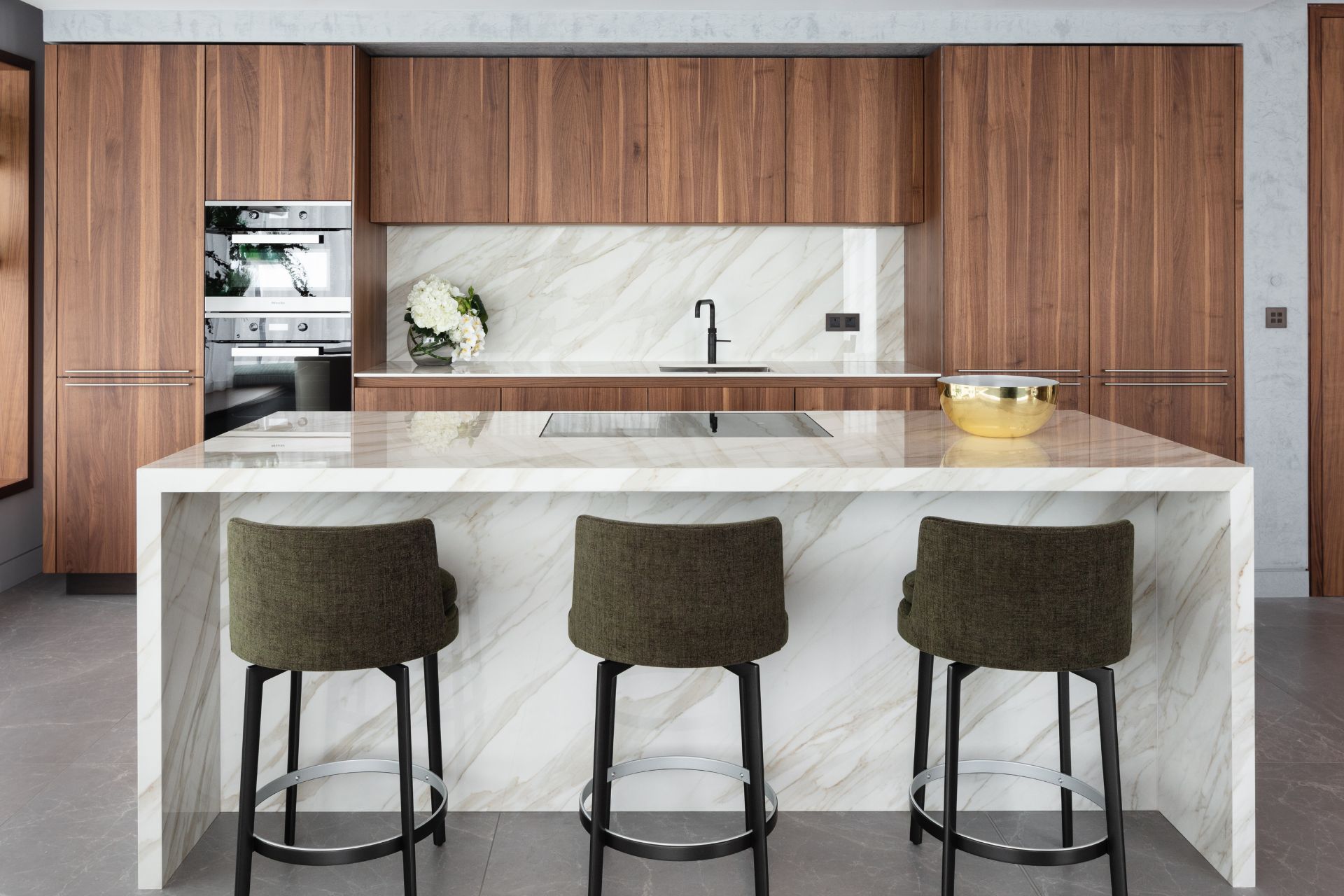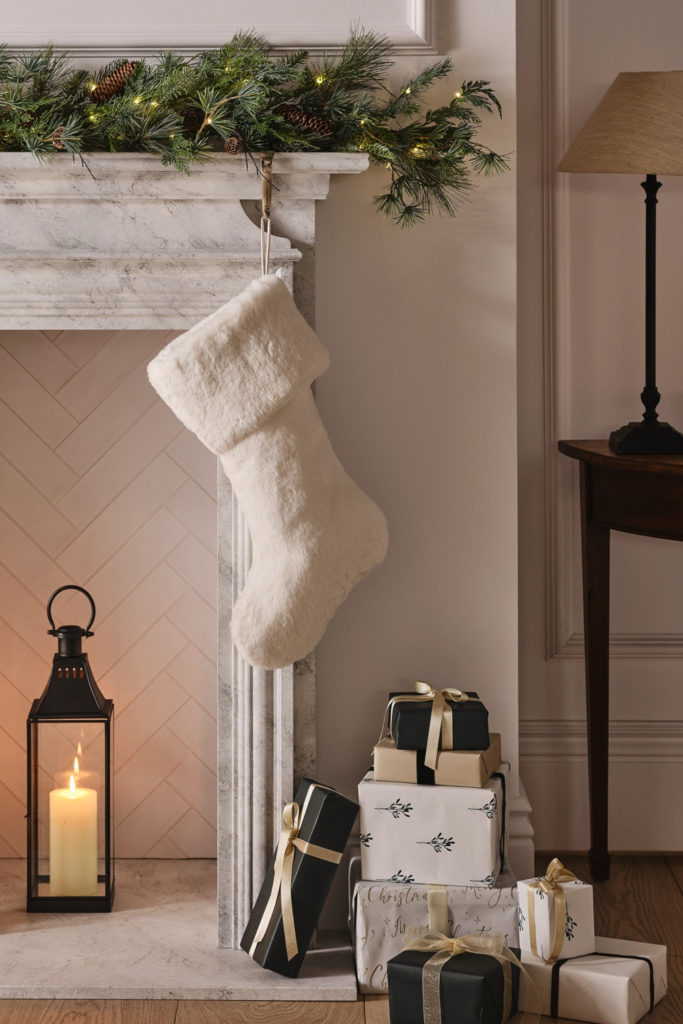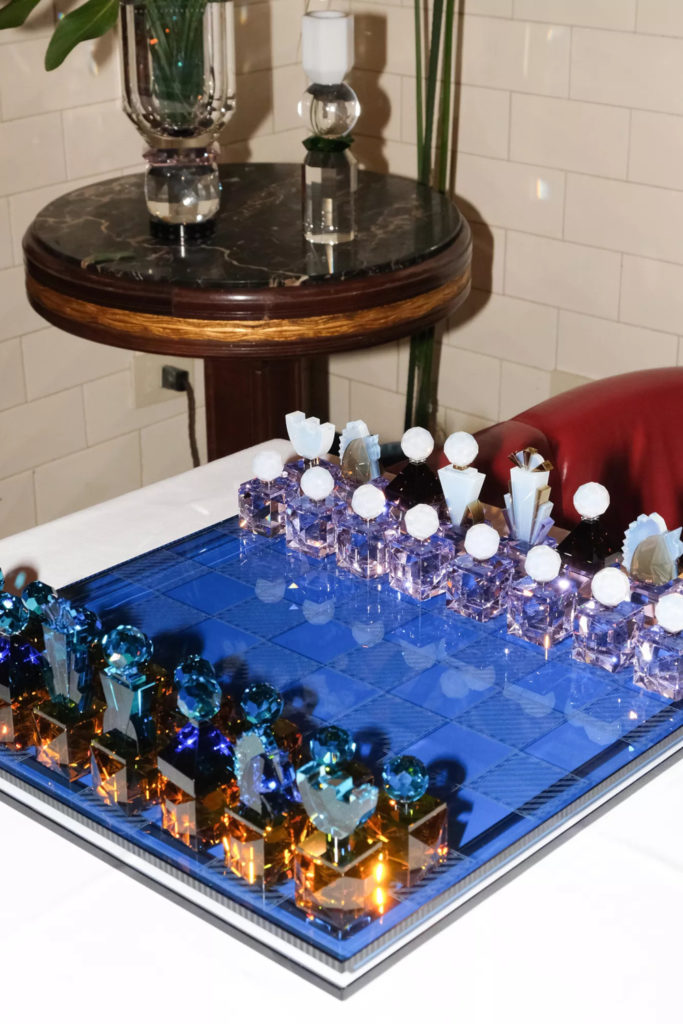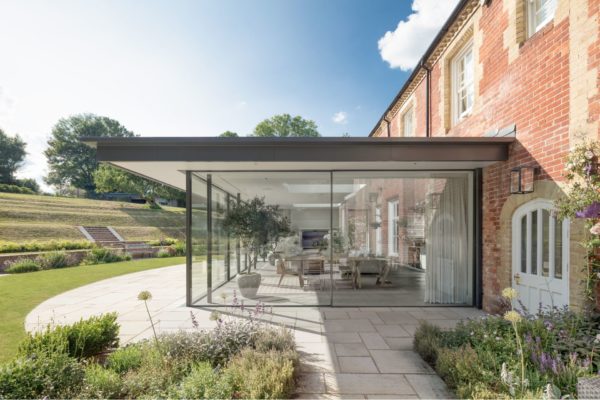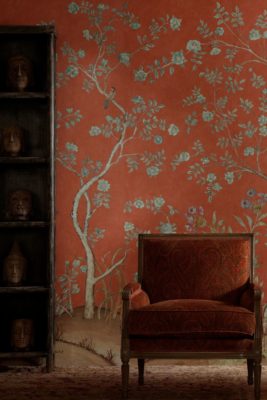
What Does The Perfect Kitchen Design Look Like?
By
7 months ago
Your kitchen queries, answered
From cabinet styles and storage to layouts and even dreaded extensions, the world of kitchen design can feel rather overwhelming. It’s not one-size-fits-all, either: every space requires a different kind of formula (and plenty of planning beforehand). To combat the kitchen woes, we enlisted the experts to tell us whether the perfect layout does actually exist – and which kitchen design is the most efficient. Here’s what they told us.
Which Kitchen Design Is The Most Efficient?
The Classic Kitchen Triangle
We’ve all heard of the kitchen triangle concept – the clever positioning of your sink, fridge and hob within easy reach of each other – but does it work in every kitchen? And is it the best starting point when planning out your kitchen design?
‘It’s important to consider how you use the space,’ says Darren Watts, kitchen expert at Wren Kitchens. ‘Do you cook often or just reheat meals? Is it usually just you in the kitchen, or do others use it at the same time? Think about whether you prefer an open-plan kitchen that connects to living areas or a more enclosed, functional setup.’
With this in mind, you can consider the kind of appliances you’ll need (and how to store them), as well as thinking about how much worktop space you’ll want for food preparation.
‘A well-planned layout doesn’t just look good, it works hard,’ Darren explains. ‘The triangle is still the gold standard for kitchen flow, but it must also be tailored to your space and how you use it.’
So, whether you opt for a U-shaped layout, a galley style, or an open-plan kitchen, it’s all about maximising functionality and finding a setup that works for you. Just make sure to ‘think about traffic flow and ensure you have a clear path between key work zones,’ Darren adds.
The Ergonomic Layout
It has to be said: since every kitchen is different, there’s no one kitchen layout that’s more efficient than another. What this means, however, is that you can maximise efficiency in any kitchen through careful planning – and according to Darren, storage is the key to an efficiency.
‘True efficiency comes from smart storage and an ergonomic layout,’ he states. ‘It’s not about following one specific layout; it’s about tailoring the space to your habits, so everything you need is within reach and works with how you cook.’
Think about pull-out drawers and pantries, integrated appliances, and hidden storage like corner cabinets. Then, go back to the triangle rule: is everything you regularly reach for as accessible as possible?
‘Plan your space around your daily tasks,’ says Darren. ‘If you cook a lot, make sure prep space is near the fridge and chopping tools, for example. Other thoughtful touches – like built-in bins near prep areas and vertical storage for trays and chopping boards – can also streamline how you use the space. The goal is to minimise unnecessary movement and make the kitchen work with you, not against you.’
The Timeless Kitchen Setup
While paint colours, cabinet styles and hardware all work together to create a timeless kitchen, it isn’t just about aesthetics, but functionality, too; after all, a truly efficient kitchen is one that will stand the test of time.
‘The best kitchen design is about longevity in both style and quality,’ Darren confirms. ‘Rather than following fleeting trends, it relies on classic design principles that age gracefully.’
So what’s your secret weapon here? Wren’s design experts recommend shaker-style cabinets, muted colour palettes, and durable worktops such as quartz or wood.
‘Certain design choices can make a kitchen feel dated: overly decorative elements like ornate mouldings or heavy detailing might suit specific styles but can be difficult to modernise or pair with newer accessories, for example,’ says Darren. ‘‘You can add visual interest using lighting, accessories, or splashbacks, which are easily updated over time without renovating your entire kitchen.’
It’s all about subtle elegance and adaptability. ‘Very trend-driven fixtures such as bold taps, lighting, or statement handles, can quickly fall out of fashion, while fixed layout features like integrated breakfast bars or niche seating arrangements can also limit flexibility, making it harder to adapt the space as your needs change,’ Darren adds.

